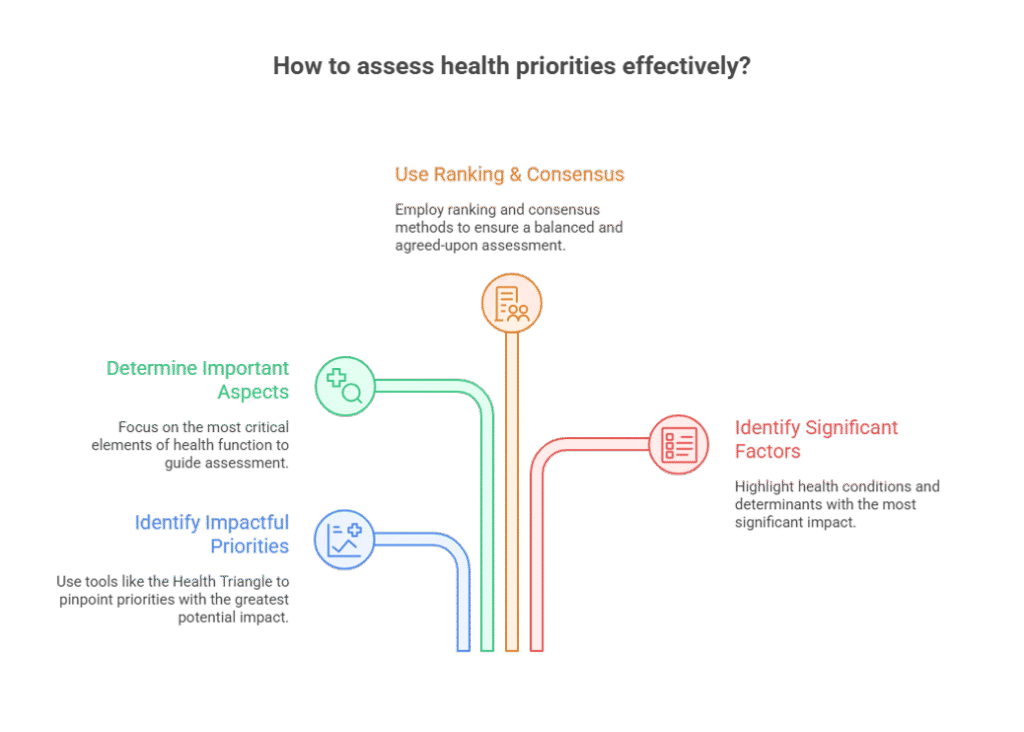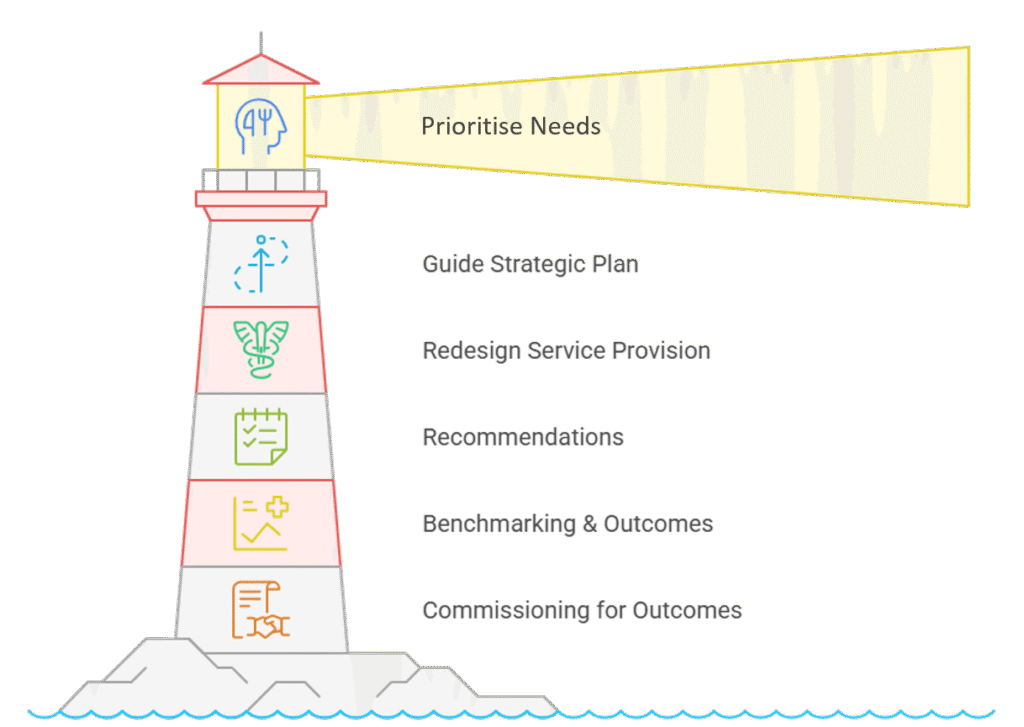Stage 3 – Assessing a health priority for change
Assessing health priorities is a key component of stage 3 and involves considering the different aspects outlined in figure 12. It is important to prioritise need and choose the health conditions/determinant factors with the most significant impact on health priority. When doing so it is important to consider the severity and size of the health priority, and whether action on the priority is acceptable or feasible.
Fig 12. Click on the image to make it larger.

Identifying which actions will be effective in tackling the health priority (ies) identified is key to making any changes you make successful. In doing this it would be important to consider the following:
- What are the effective actions that can reduce the health priority across the 3 levels of prevention?
- What is the evidence of effectiveness of each of these actions?
- Are there any national policies or frameworks which set out what should be done?
Once a change(s) has been identified it is key to understand whether they will be acceptable to all stakeholders/groups, whether the actions will reach the most affected group (s) and whether the resource implications are feasible?
Fig 13. Click on the image to make it larger.

Handy tools for supporting stage 3
Methods of prioritisation
There are number of methods that can be used to help prioritise the health needs identified. The following advice note from Scottish Government provides useful background to consider when doing this stage (Health and social care integration: prioritisation guidance – gov.scot).
Examples of methods which can considered are listed below with links to more information on what they are and how they can be undertaken.
- Forced ranking
- Strategy grid
- Priority grid
- Nominal group technique e.g. Multi-Criteria Decision Analysis (An Introductory Guide to Multi-Criteria Decision Analysis (MCDA) – Government Analysis Function , Multi-criteria Decision Analysis Software in Healthcare Priority Setting: A Systematic Review – PubMed)
Previous – Stage 2 – Identifying health priorities
Next – Stage 4 -Planning for change